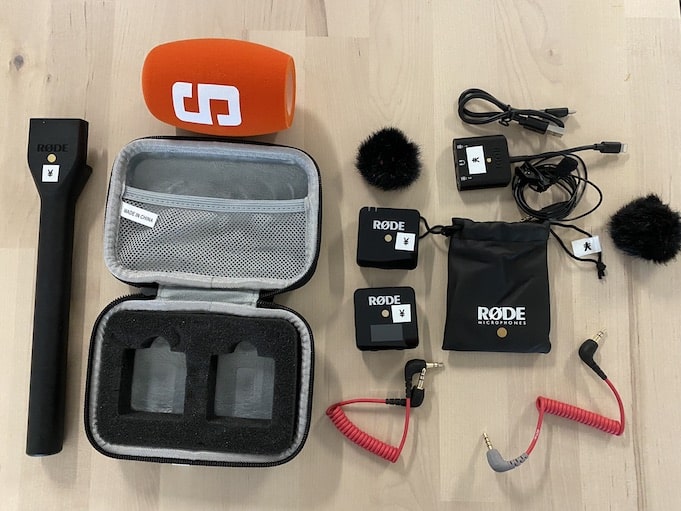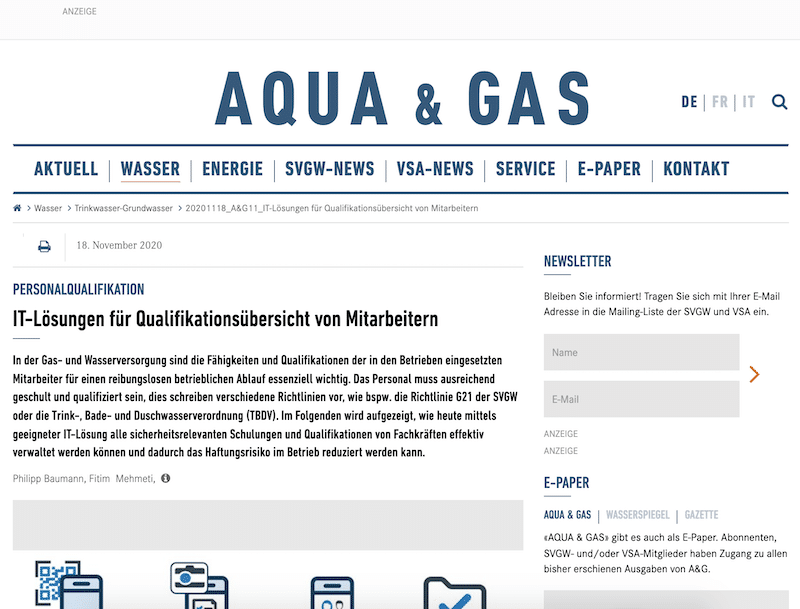
Key Takeaways:
- Effective inventory management optimizes stock levels, reduces costs, and enhances customer satisfaction.
- Strategic inventory management aligns business goals with inventory practices, minimizing shortages and maximizing efficiency.
- Implementing best practices and software automation improves control and accuracy in inventory management.
In This Article:
- How to Improve Inventory Management
- What Are the Initial Steps to Improve Inventory Management?
- Best Techniques for Improved Inventory Management Services
- Deploying an Inventory Management System
- Asset Management Software in Use by Our Customers
- Can ABC Analysis and Minimum Stock Levels Upgrade Inventory Control?
- How Do Real-Time Analytics and IoT Devices Improve Inventory Management?
- How to Deal with Inventory Management Challenges
- Benefits of Improving Inventory Management
- Frequently Asked Questions About How to Improve Inventory Management
How to Improve Inventory Management
In order to improve inventory management, it is important to ensure efficiency for businesses of all sizes, as it impacts profit margins, customer satisfaction, and operational efficiency. Managing inventory effectively helps reduce stockouts and carrying costs while optimizing fulfillment. Additionally, an accurate inventory system enables informed decisions about purchasing, production, and sales strategies.
This article will cover comprehensive strategies to enhance inventory management and address associated challenges. It will explore areas such as inventory optimization, demand forecasting, and supply chain management. Furthermore, it will discuss the importance of inventory management software examples, lean inventory practices, and robust control policies. Technologies such as barcode scanning and RFID integration, along with regular cycle counting, will be highlighted.
Moreover, the article will emphasize the significance of data analysis and performance metrics to identify inefficiencies and areas for improvement. Leveraging technology and data analytics allows businesses to gain insights into inventory trends, demand patterns, and supplier information. These strategies enable businesses to exert greater control over their inventory, leading to agile operations and sustainable growth in today’s marketplace.
What Is the Role of Strategic Inventory Management?
Strategic inventory management plays a crucial role in ensuring that business goals align with inventory practices. This involves thorough planning and execution to optimize inventory levels, reduce costs, and enhance customer satisfaction. With strategic inventory management, businesses can align decisions with sales forecasts, production schedules, and supply chain trails, thereby maintaining optimal stock levels and minimizing shortage issues.
By implementing strategic inventory management, organizations can improve operational efficiency, reduce carrying costs, and enhance cash flow management. Additionally, it enables businesses to navigate market fluctuations, identify customer preferences, and stay competitive. Therefore, aligning inventory management practices with business strategies is essential for building resilience, agility, and profitability in today’s market environment.
What Are the Initial Steps to Improve Inventory Management?
The initial steps to improve inventory management start with conducting an inventory audit to study the current stock levels, determine discrepancies, and analyze the existing processes. This helps ensure that the organization understands its inventory position and identifies areas for improvement. Objectives for improvement need to be determined, with specific targets set to reduce stockouts, optimize inventory turnover, or minimize carrying costs. Clear objectives provide direction and focus for enhancing inventory management, guiding decision-making and resource allocation.
Maintaining inventory accuracy and visibility requires accurate data entry and regular reviews of inventory levels. Timely and accurate data entry ensures that inventory records accurately reflect actual stock, reducing errors and discrepancies. Regular reviews allow the business to track usage patterns and identify current trends, enabling informed decisions about replenishing stocks or prioritizing items. By following these steps, businesses can lay the foundation for improving their inventory practices and achieving long-term success.
Over 600 Companies, Schools and Cities Rely on Timly
(No credit card required)
Best Techniques for Improved Inventory Management Services
The best techniques for improving inventory management services involve implementing industry best practices. These practices include just-in-time (JIT) inventory management, which orders and receives items only when necessary, reducing inventory holding costs and excess stock. Proper training of employees is essential to ensuring they have the skills and knowledge needed to maintain the inventory system efficiently. Providing adequate training empowers employees to accurately track inventory, follow inventory guidelines, and effectively utilize inventory management software features.
Let’s examine the six best techniques required to improve inventory management:
- Implement just-in-time (JIT) management.
- Install effective inventory management software, such as Timly, to provide visibility on inventory and track stocks in real-time.
- Conduct regular cycle counts and audits to ensure inventory accuracy.
- Establish clear control policies and procedures.
- Ensure warehouse layout and storage systems optimize space utilization.
- Train staff to develop and enhance their inventory management skills and knowledge.
By focusing on these six steps, you can improve your inventory management effectively.

Deploying an Inventory Management System
Deploying an inventory management system is important due to the advancement of technology. With the right use of technology, organizations can reap myriad benefits, such as automation and real-time data access. Switching to an automated system streamlines inventory-related tasks like tracking stocks, processing orders, and ensuring stock replenishment, thereby increasing efficiency and reducing manual errors. Real-time data access provides instant visibility into inventory levels, enabling businesses to make better decisions.
By integrating the inventory management system, organizations can ensure seamless coordination across various aspects such as purchasing, warehousing, and sales. This integration enhances communication and collaboration between departments, fostering better coordination and streamlined operations. Moreover, inventory management systems facilitate data analysis and reporting, enabling businesses to identify current trends, optimize inventory levels, and forecast demand. In summary, deploying an inventory management system helps organizations enhance efficiency, accuracy, and competitiveness in today’s competitive market environment.
How Can Software Automation Advance Inventory Management?
Software automation can help advance inventory management by reducing human error and saving time. Automation features in inventory management systems streamline tasks, enhancing efficiency and accuracy. For example, automated order processing eliminates manual data entry errors, speeding up order fulfillment and ensuring timely delivery to customers. Additionally, automation provides stock level alerts based on predefined thresholds, proactively preventing stockouts or overstocking.
Using Timly’s inventory management software to automate repetitive and time-consuming tasks frees up staff to focus on other activities such as analyzing trends, optimizing inventory levels, and improving customer service. Moreover, automation improves data accuracy and reduces errors from manual input, resulting in more reliable inventory records and better decision-making.
In conclusion, software automation advances inventory management by providing benefits such as error reduction, time savings, and improved operational efficiency.
Asset Management Software in Use by Our Customers
The Timly software is continuously evolving to meet the needs of our customers. In various success stories, we show you how Timly optimizes processes in companies, thereby saving significant effort. With Timly, inventory management becomes child’s play.

Optimized Device Management With Innovative Self-Inventory
SodaStream is the world market leader for water sparkling systems for domestic use and has a lot of IT equipment at its various locations. Many colleagues now work from their home offices. A digital solution for the efficient management of IT end devices became necessary...

Panasonic x Timly: Driving Technological Innovation
One of the most remarkable aspects of human ingenuity is our ability to innovate. Innovation is embedded in the DNA of consumer electronics giant Panasonic, which has diversified into a number of sectors, from heavy industry to construction...

Manage Video Equipment Efficiently Without Much Effort
The Hamburg media company always does outstanding journalistic work and is characterized by independent reporting. In order to maintain journalistic quality, the teams work with highly specialized devices – these need to be managed efficiently...

Smart City Asset Management – Timly in Use at DIGOOH
The core business of DIGOOH Media GmbH in Cologne is to manage digital city light posters (DCLP) for outdoor use in various cities in Germany. The challenge here lies in making the client’s communication message always available at the right time, in the right place...
(No credit card required)
Can ABC Analysis and Minimum Stock Levels Upgrade Inventory Control?
ABC analysis and minimum stock levels can enhance inventory control by providing a structured approach to managing inventory. ABC analysis categorizes inventory items based on their importance and consumption value, enabling organizations to prioritize their resources accordingly. Items in the A category, which are high in value and consumption, require close monitoring and tighter control. Items in the B category have moderate importance and consumption, while those in the C category are of low value and consumption.
Additionally, minimum stock levels establish the minimum quantity of each inventory item needed to prevent stockouts and maintain operational continuity. By setting minimum stock levels based on factors such as lead time, demand variability, and service levels, organizations can ensure they have adequate stocks while reducing excess inventory and carrying costs.
Thus, ABC analysis and minimum stock levels offer a systematic approach to inventory control, enabling organizations to optimize inventory levels, minimize stockouts, and improve operational efficiency.
How Do Real-Time Analytics and IoT Devices Improve Inventory Management?
Real-time analytics and IoT devices enhance inventory management by providing valuable insights to improve visibility of inventory levels and movements. With real-time analytics, organizations can forecast and leverage historical data and current trends to predict future trends. Additionally, real-time data allows organizations to make informed decisions about inventory levels, order quantities, and replenishment timing, thereby minimizing stockouts and excess stocks.
IoT devices play a crucial role in providing real-time tracking of inventory management in supply chain, from production houses to distribution centers and retail stores. Devices such as RFID tags and sensors monitor inventory levels, location, and conditions in real time. By providing continuous updates on inventory status, IoT devices offer visibility and control, enabling organizations to respond promptly to demand fluctuations, reduce stockouts, and optimize inventory management. Integrating real-time analytics and IoT devices improves inventory management by enabling proactive decision-making and enhancing operations.
How to Deal with Inventory Management Challenges
Dealing with inventory management challenges provides insights into issues such as stockouts and overstocking. Stockouts occur when demand exceeds inventory capacity, resulting in lost sales and dissatisfied customers. Overstocking, on the other hand, involves excess inventory levels, tying up capital and storage space and increasing the risk of obsolescence or spoilage.
To address these challenges, organizations need to implement strategies such as demand forecasting to predict future sales trends. By analyzing historical data and market trends, organizations can anticipate fluctuations in demand and adjust inventory levels accordingly. Implementing JIT inventory strategies also helps reduce stockouts by ordering items only when needed, thus reducing excess inventory and holding costs.
Additionally, using inventory management software with real-time tracking capabilities provides visibility into inventory levels, helping to prevent both stockouts and overstocking. By proactively addressing these challenges, organizations can optimize inventory levels, improve customer satisfaction, and enhance operational efficiency.
What Strategies Can Improve Inventory Accuracy?
Strategies to improve inventory accuracy require effective measures to overcome challenges. By fostering communication between departments and stakeholders, organizations can ensure accurate data exchange and reduce discrepancies. Regular audits and cycle counts help identify and rectify issues, maintaining proper inventory management. Utilizing technology such as barcode scanning and RFID tagging streamlines inventory tracking processes and reduces manual errors.
Additionally, implementing robust supply chain management helps organizations navigate disruptions and enhance inventory accuracy. For instance, establishing backup suppliers and determining buffer stock levels can mitigate unexpected disruptions in the supply chain. Moreover, agile inventory management practices enable organizations to adapt quickly to changes in demand or supply, ensuring accurate inventory levels at all times. Thus, by implementing effective strategies, organizations can improve inventory accuracy, enhance operational efficiency, and provide enhanced customer satisfaction.
Benefits of Improving Inventory Management
The benefits of improving inventory management are tied to the many advantages impacting the organization and supply chain management. By ensuring that inventory levels are optimized, organizations can reduce carrying costs associated with excess stock and mitigate the risk of stockouts, leading to improved profitability. Additionally, effective inventory management enhances customer satisfaction by ensuring products are available when needed, thus reducing lead times and minimizing order fulfillment errors.
Furthermore, optimizing inventory management contributes to overall supply chain performance by streamlining operations and reducing costs. It facilitates better planning and scheduling of production, leading to better alignment with supply chain demand. Moreover, by reducing excess inventory, organizations can free up working capital that can be utilized in other areas, such as research and development or expanding the organization. Therefore, it is important to improve inventory management as it enhances operational efficiency, reduces costs, and boosts the overall competitiveness of the organization within its supply chain.
How Does Inventory Management Increase Supply Chain Efficiency?
Inventory management increases supply chain efficiency by ensuring the optimization of inventory levels, reducing costs, and improving operational efficiency. With effective inventory management, organizations can ensure there is enough inventory available at the right place and time, minimizing stockouts and excess inventory. By aligning inventory levels with demand forecasts and production schedules, organizations can streamline supply chain operations, reduce lead times, and improve order fulfillment.
A case study that showcases how organizations have used inventory management to improve their practices is Amazon. The company utilizes advanced techniques such as demand forecasting algorithms and warehouse automation to optimize inventory levels and streamline order processes. This has enabled Amazon to provide timely delivery services for more than a million products worldwide, resulting in high customer satisfaction. Overall, by enhancing their inventory management, Amazon has emerged as a leader in the e-commerce industry.
Frequently Asked Questions About How to Improve Inventory Management
How to Improve Inventory Management
What Strategies Can Improve Inventory Accuracy?
Recommended for You:
Book an online demo - free and without obligation - or create your free trial account directly.








































































































































































































































































